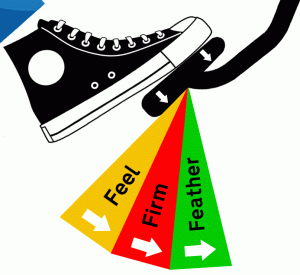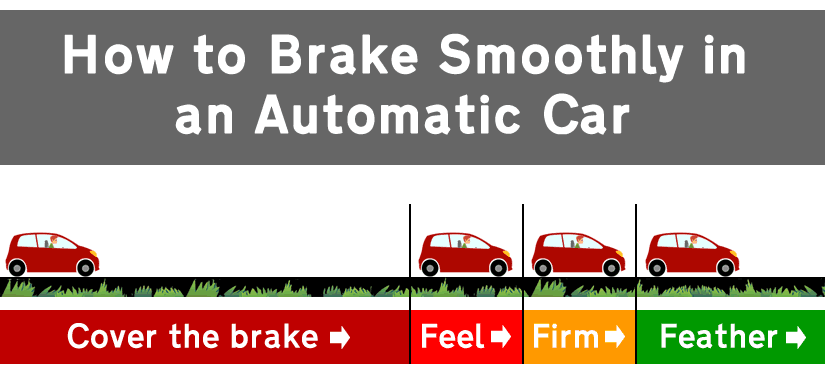Learning how to brake smoothly in an automatic car starts with observing, anticipation and planning. Reading the road ahead provides the driver with the ability to anticipate the need to slow down or stop in advance, which greatly helps with braking smoothly.
Anticipation and planning take time and experience to perfect, but with these skills, you’ll not only be able to brake more smoothly, but also to become a safer, more confident driver.
How Reading the Road Ahead Helps with Braking Smoothly
When you observe a situation ahead that will require you to either slow down or stop, you can begin to slow the car down in advance, rather than leaving until you get there. This can apply to many situations, for example:
- Junctions and roundabouts
- Traffic lights
- Pedestrian crossings
- Traffic queues
As you progress with learning to drive, you’ll begin to anticipate a situation that will likely require slowing down or stopping. For example:
- Junction or roundabout signs, or traffic ahead crossing in of you can indicate a junction.
- If a traffic light has been on green for an extended period of time, it will likely change to red by the time you arrive.
- Looking ahead at a pedestrian crossing, are people waiting? If so, the light will likely change by the time you get there.
- Traffic queues are usually easy to stop in advance, giving you plenty of time to slow down.
Before you begin braking, take your right foot off the accelerator pedal and cover the brake.
Cover the Brake
‘Cover the brake’ is a term that driving instructor use, meaning to place your foot over the brake pedal in anticipation of using it. During the phase of covering the brake, you car will gradually lose speed by a process called engine braking.
Engine braking means that because your foot is not on the accelerator, the engine is restricted of fuel and airflow. This creates a vacuum inside the engine that various internal components have to work against, which ultimately slows your car down. Other factors such as air resistance and tyre friction also help in slowing your vehicle down.
Benefit of Engine Braking
The benefit of engine braking means that because you come off the accelerator earlier, you use less fuel. Also because you slow down earlier, there’s less brake wear and of course, it helps you to brake more smoothly because you’ll have less speed to reduce by the time you start actually braking.
Feel Firm Feather
We’ve already covered the braking technique of feel, firm and feather in how to brake in an automatic car. We know that when braking you ‘feel’ for when the brakes begin slowing you down and that you ‘firm on’ to lose all unwanted speed.

The final stage of learning how to brake smoothly in an automatic car is feathering of the brake. Feathering off the brake means you keep pressure applied to brake but at less force. During this final stage of braking, you can make small adjustments of brake pedal pressure depending on whether you need to slow down or stop.
Smooth Braking to a Stop
To brake smoothly to a stop in an automatic car:
- Start by losing excess speed by reading the road ahead and covering the brake
- Feel, then firm on the brake until you reach a walking pace
- Now lift the brake pedal slightly to begin feathering
- Gently apply the brake until the car stops
- Secure the car by selecting ‘Park’ (P) on the gear selector lever and apply the parking brake.
Benefits of Braking Smoothly
By braking smoothly, you will:
- make for a more comfortable ride for vehicle occupants
- reduce brake wear
- reduce fuel consumption
- increase vehicle stability and lessen the chance of an accident
- increase your chances of passing the driving test

Oh man this is just great now make an article about turning and proper turning speed 20 miles an hour